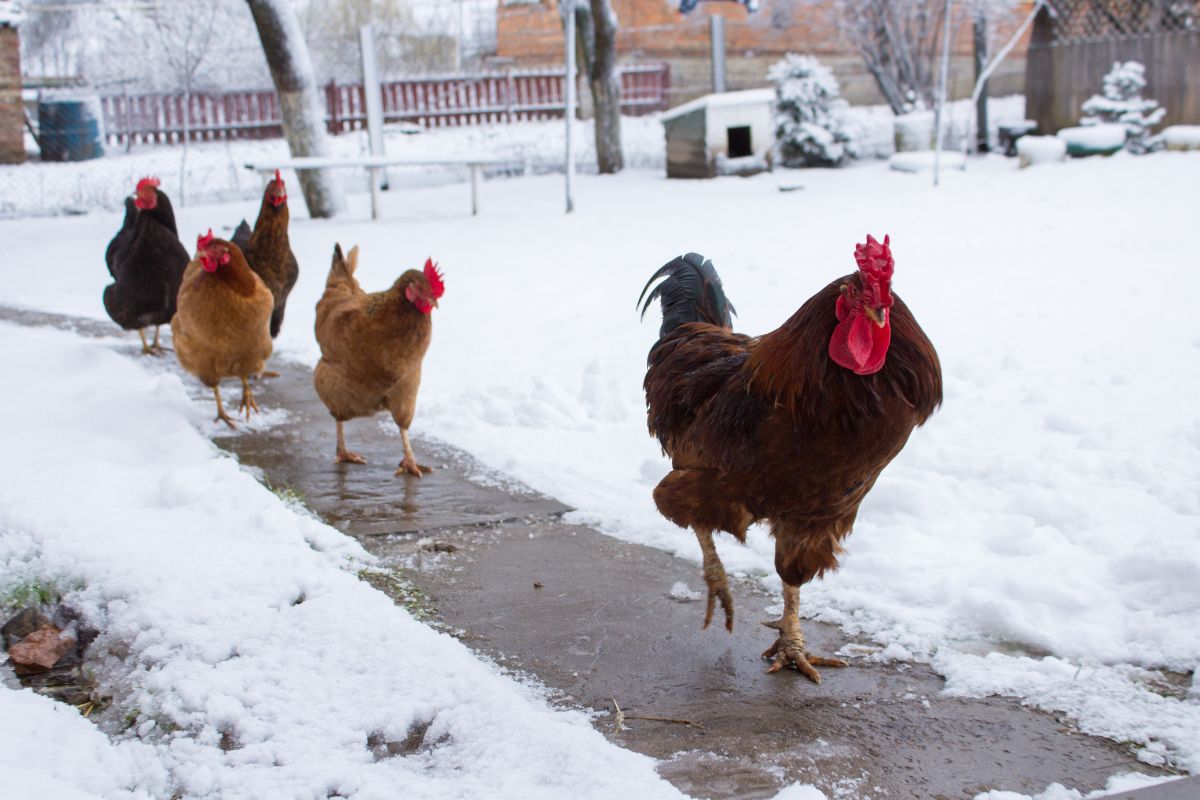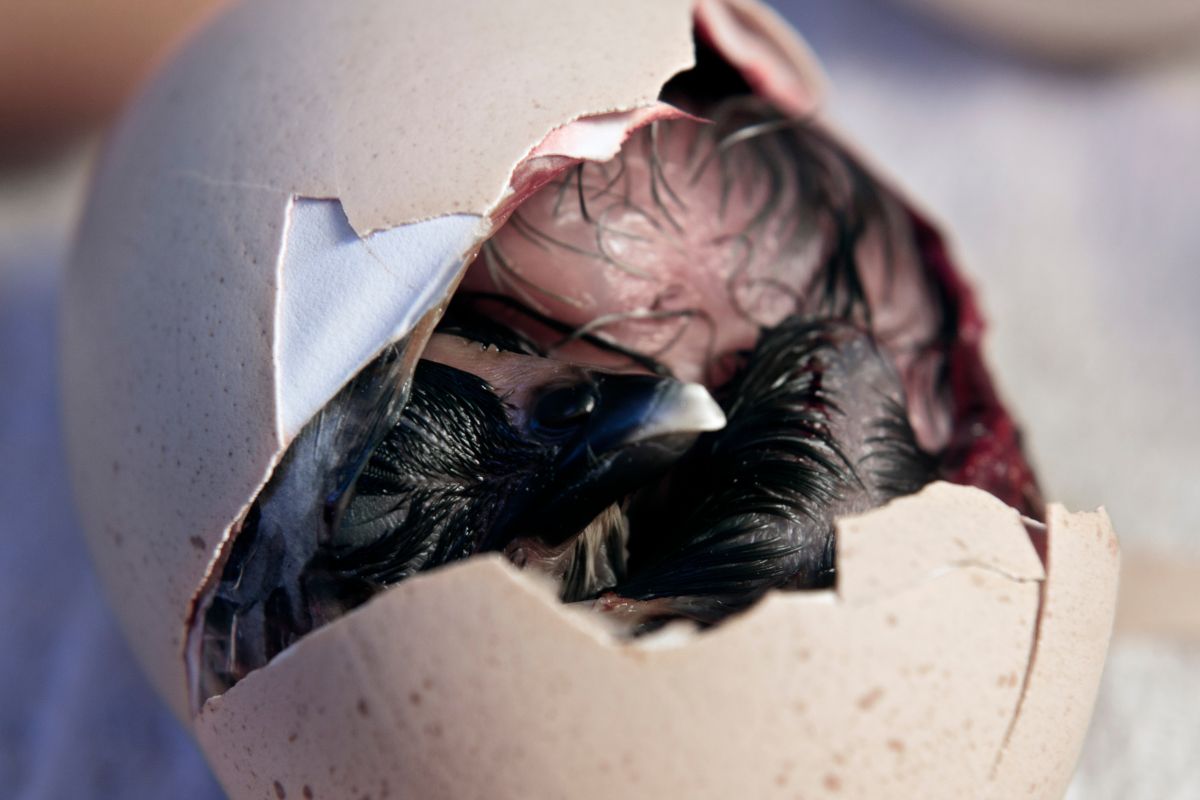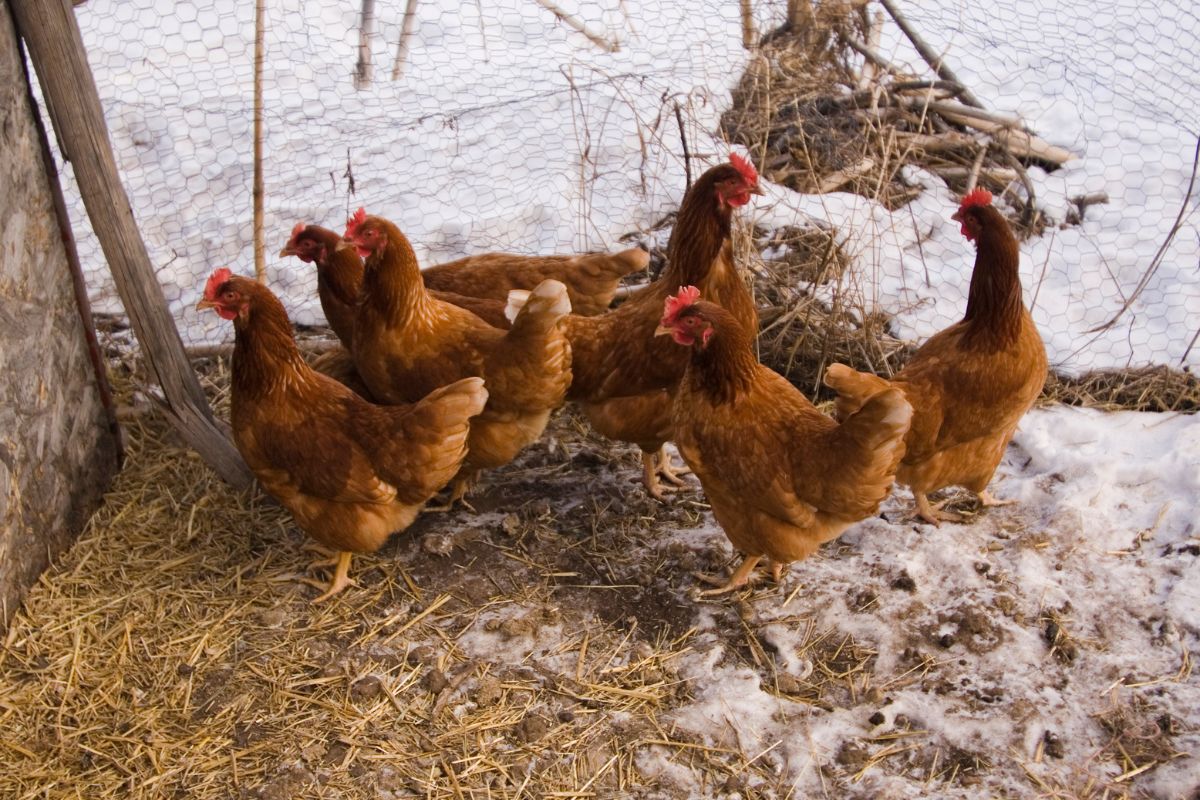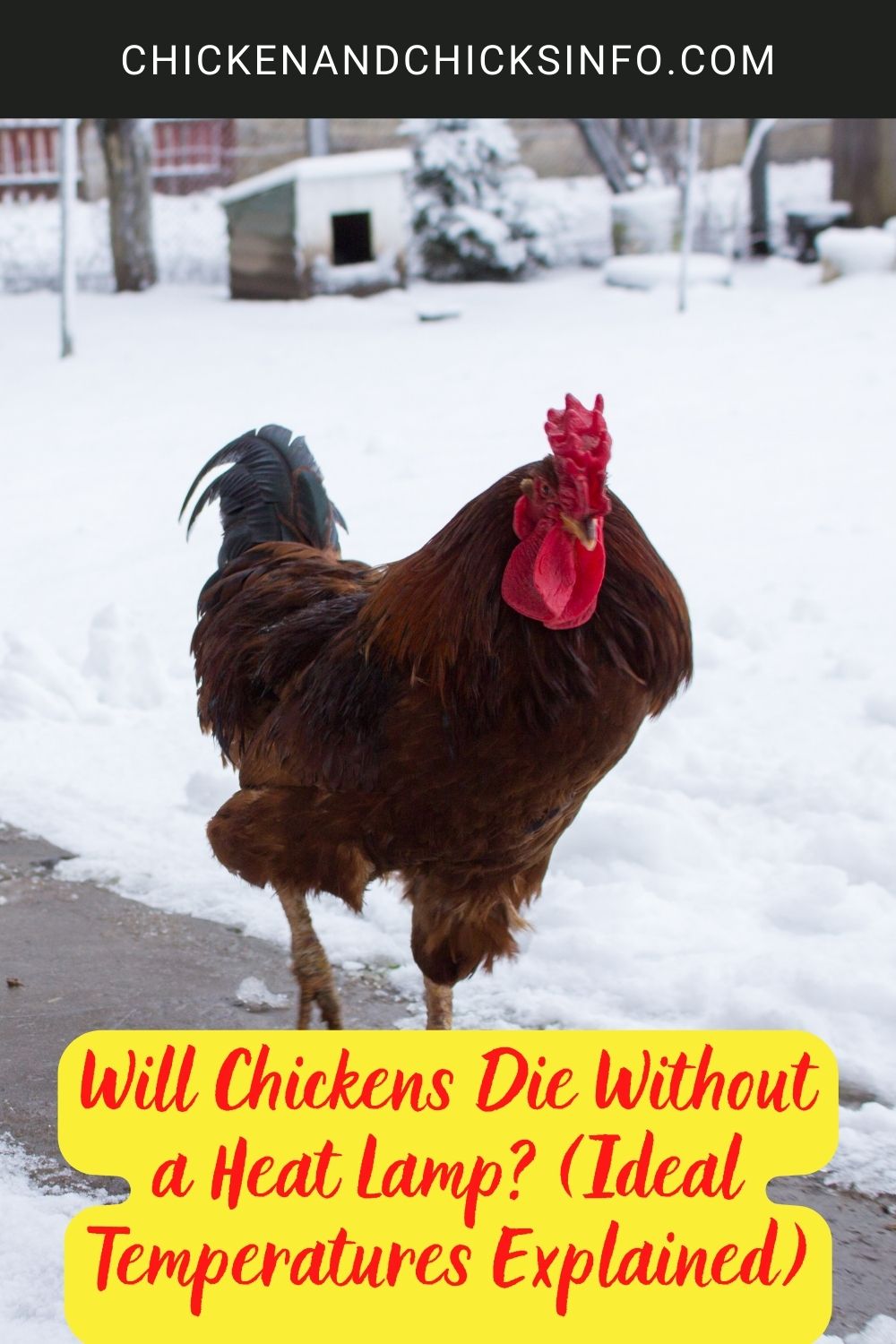
Generally speaking, adult chickens are incredibly hardy and well-prepared to survive in sub-zero temperatures without the need for heat. Baby chicks, on the other hand, are fragile when born and usually require a heat lamp for the first few weeks.
Whether or not you’ll need a heat lamp for your chicks depends on how consistently you can keep the temperature within the ideal range for them. It typically makes raising chicks a lot easier for those first few weeks in most cases.
Jump to:
Should You Use a Heat Lamp in a Chicken Coop?
If you browse Amazon you’ll see all kinds of heat lamps and heaters designed for chicken coops to help keep your chooks nice and warm.
Personally, I’ve never known someone to use a heater in their coop. I’ve known people that have raised chickens in some pretty cold places, too, like Alaska and northern Canada.
Whenever the topic of heating a coop comes up within the backyard chicken community, there are always raised eyebrows due to the potential risks.
Assuming you’re going to have the heater on overnight, there is always the risk of an electrical fault or something else causing a fire while you’re sleeping.
I’m not suggesting any of these products are anything less than safe! I’m just repeating what I hear when I speak with other chicken owners.
Chickens (most breeds) are well equipped to deal with sub-zero temperatures. Their plumage traps air in between their feathers, and they will cozy up together when roosting to stay warm.
There is rarely the need to insulate a coop at all, let alone heat it.
The key things that you should always keep in mind in regards to keeping your chickens warm enough are moisture and wind chill. Those are the two things that will lower that core temperature to dangerous levels.
Coops need good ventilation to remove the ammonia and keep fresh air flowing through. But your chicken’s roosting bar, nesting boxes, and some other areas should be free from wind blowing through.
If your chickens get wet during the day, you shouldn’t leave them all soggy in a cold coop. Just think how you’d feel!
Related - Can chickens really drown in the rain?
Do Chicks Need a Heat Lamp?

Chicks need to be kept warm when they first hatch. They don’t have any feathers yet and aren’t able to regulate their own temperature at a safe level.
In the wild, this would be mother hen’s job. She will have sat on those eggs for around 21 days to hatch them and will continue to allow her baby chicks to bury themselves in her plumage to keep warm.
When hatching chicks at home, however, you’ll use an incubator to mimic those 21 days. Incubators keep eggs within the optimal temperature range of 35 to 40.5°C (84.5 - 104.9°F).
When chicks hatch, they can be moved into a brooder. A brooder is essentially a safe place where baby chicks can be kept warm, fed, and looked after.
Most brooders either come with a lamp, or it’s recommended you use one. This is because you need to keep the temperature between 35 to 37.8°C (95 - 100°F) for the first couple of weeks of baby chicks’ lives.
You can then start to lower the temperature by 5 degrees a week for around 6 weeks until you’ve lowered the temperature to around 80-75 degrees.
By then, chicks are usually ready to survive the outdoors. It depends on how developed their feathers are and what the weather is like. Different breeds will be fully feathered at different ages, always act on the side of caution.
Here’s an overview of the recommended temperature ranges to keep baby chicks at:
| Age of Chick (weeks) | Temperature (F) |
|---|---|
| 0-2 | 100-95 |
| 2-3 | 95-90 |
| 3-4 | 90-85 |
| 4-5 | 85-80 |
So, the answer as to whether or not you need a heat lamp for chicks is whether or not you can keep them at or around those temperatures.
There are other ways you can provide warmth. I’ve heard of people using hot water bottles and keeping a brooder in a warm place and their chicks grew up just fine.
However, if you’re new to raising chicks, using a heat lamp is by far the easiest way to ensure they’re going to be kept nice and warm around the clock.
Related - Wondering if you can hatch supermarket eggs? Read this!
What Temperature Is Too Cold for Chickens?

This is also a tough question to answer with a one-size-fits-all answer, because, again it depends on what breed of chicken we’re talking about.
Some chickens are much more equipped to deal with cold temperatures than others. As you can probably guess, generally speaking, bigger hens with a thicker plumage are considered more cold-weather hardy.
This would include breeds like the Brahma, Wyandotte, Sussex, and Cochin. All large, well-feathered birds with plenty of insulation.
You do have to be mindful of frostbite though. Chicken’s combs, in particular, are prone to frostbite in extreme conditions. The first sign of frostbite is usually blackening at the tips of the comb.
On the other hand, small chickens like bantams, and some breeds like the Polish, Old Game Fowl, and Fayoumi are not cold weather chickens.
They are lacking the body mass and thick coats to deal with sub-zero temperatures!
Related - Read more about chicks and what temperatures they need here.
In Summary
If you’ve been worried about your chickens freezing out there in the cold while you’re tucked up all nice and warm in your bed, hopefully, I’ve reassured you that they’ll be just fine.
Using heat lamps for baby chicks to ensure they’re warm during their first few weeks it’s important. After that, most chickens are fine to be outside in all temperatures and weather conditions and will do just fine.
As long as you're keeping all their basic needs met; adequate housing, plenty of food, and fresh drinking water, you’ll be pleasantly surprised how hardy chickens are.





